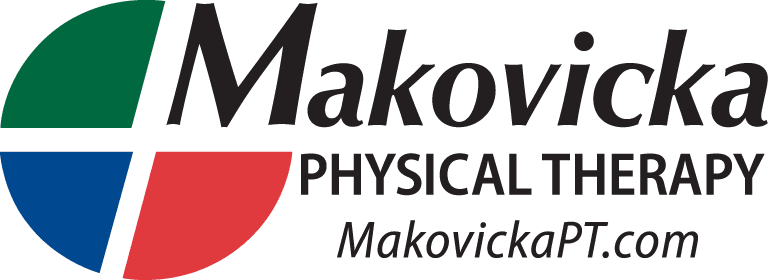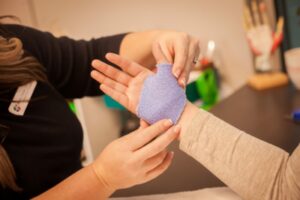You may have questions about De Quervains Tenosynovitis. Makovicka Physical Therapy’s Hand Therapist and Certified Occupational Therapy Assistant help out by answering a few of the most often asked questions:
What is De Quervain’s Tenosynovitis?
De Quervain’s Tenosynovitis is when the tendons along the thumb side of the wrist are swollen and painful. It can cause an increase in pain to the base of the thumb when you try and make a fist, and grasp onto objects. Sometimes the pain is increased when holding objects for an extended amount of time, and when you turn your wrist. Other possible causes are from participating in repetitive wrist and hand movement day after day such as working in a garden, playing golf, or lifting a baby.
Who does De Quervain’s Tenosynovitis affect most often?
It generally affects people who are:
- Pregnant and/or breastfeeding due to changes in hormones which may cause fluid retention
- People who have rheumatoid arthritis may be more susceptible to De Quervain’s Tenosynovitis
- People who are in their 40s and 50s age range
- Women have a higher probability of being affected than men
- An direct injury to the wrist or tendon
How does someone get tested for De Quervain’s Tenosynovitis?
A doctor or therapist is able to test for De Quervain’s Tenosynovitis with the Finkelstein test. The test is performed with your thumb tucked into the palm of your hand and your fingers making a fist around your thumb. Next, you’ll be asked to move your fist towards your pinky, giving a gentle pull to the thumb. If you experience pain, it indicates a positive result.
What is the treatment or therapy for De Quervain’s Tenosynovitis?
Fifty to eighty percent of people can recover from De Quervain’s Tenosynovitis without surgery. A hand therapist can assist with pain management, modifying tasks to limit re-injury, and strengthening the thumb properly once healing has progressed.
Some individuals benefit from wearing an orthosis with the wrist and thumb placed in a neutral position. The orthosis is beneficial during the day and at night to ensure the thumb is kept safe from injury. This device is custom made by a hand therapist.
Taking a pain relief medication and icing the thumb can also help alleviate the pain.
If you have further questions about De Quervain’s Tenosynovitis, contact Makovicka Physical Therapy’s University Place clinic to make an appointment with a Hand Therapist at one of our Lincoln locations.

